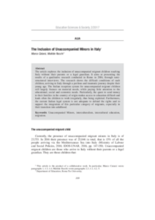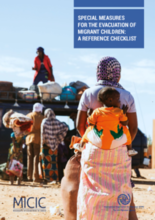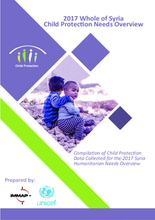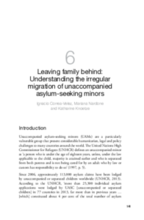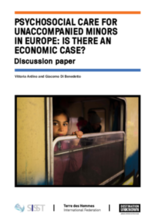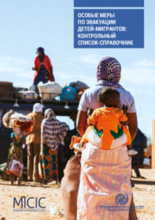Displaying 631 - 640 of 824
The article explores the inclusion of unaccompanied migrant children reaching Italy without their parents or a legal guardian.
This four-page document is a synthesis of the working document entitled “Child Rights in the Global Compacts: Recommendations for protecting, promoting and implementing the human rights of children on the move in the proposed Global Compacts,” drafted by the Steering Committee of the Initiative for Child Rights in the Global Compacts.
The Checklist is a part of the toolkit developed by the IOM to provide technical guidance for the operationalization of the MICIC Initiative Guidelines. It is a non-binding compilation of recommended actions to ensure that the specific protection needs of migrant children are taken into consideration during humanitarian evacuations.
This document provides analysis of child protection needs and risks at the government level to support child protection actors in programmed development, resource mobilasation and advocacy.
This chapter from the book 'A long way to go: Irregular migration patterns, processes, drivers and decision-making,' discusses the global trends in the migration of unaccompanied minors in recent years.
This roadmap to ending the detention of children in immigration from the Initiative for Child Rights in the Global Compacts outlines the commitments, examples of practice, reference documents, and guidelines for each stage of the strategy from June 2019 to June 2025.
This dossier (written in Italian) contains information relating to the quarter October-December 2016 of the "Children Come First: Intervention at the border" project, which aimed to strengthen the system of protection and reception of migrant children arriving in Italy, whether they are separated or accompanied by their parents.
This document aims to provide an overview of the scope of activities of the International Organization for Migration (IOM) in relation to the protection of unaccompanied migrant children and support for this group.
Контрольный список входит в состав инструментария, разработанного МОМ в качестве технического руководства по практическому применению Руководящих положений Инициативы МИСИК, включая руководящее положение 13: Переселение и при необходимости эвакуация мигрантов. Это свод не имеющих обязательной силы рекомендуемых действий, направленных на то, чтобы потребности детей-мигрантов в особой защите были учтены в ходе гуманитарной эвакуации. С помощью этого функционального инструмента государства и международные организации смогут соблюсти принципы защиты детей (ЗД) при организации гуманитарной эвакуации, учитывая индивидуальные условия уязвимости детеймигрантов и обеспечивая их потребности до, во время и после эвакуации. Подразумевается, что рекомендуемые действия будут в полной мере внедрены в операции по всеобщей эвакуации; они не предполагают организации отдельного процесса эвакуации детей.
Extracting on chronologic data, this book discusses the politics and practice of intercountry adoption starting with the state international adoption to in the 1950s continuing to present-day adoption practice and protections.

